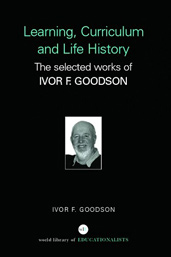Learning, Curriculum and Life Politics: the selected works of Ivor F. Goodson
On Curriculum Form
Conclusion
This paper has noted that a polarised pattern of mentalities emerged in Britain in the period 1770-1850. For the ‘higher order,’ mentalities were judged to be intellectual, abstract and active, for the ‘lower orders,’ they were considered sensual, concrete and passive. In time, these polarised mentalities were built into the deep structures of curriculum - they were, so to speak, internalised. In this way, the process of mentality ‘production’ was extended, for school subjects themselves became, in turn, the makers of subjectivities. A self-confirming circle was drawn around different social groupings. Given the resonance with patterns of cultural capital, this was to prove a resilient settlement.
At the time that these constellations of mentalities, curriculum and cultural capital began to gather a state schooling system was emerging. In time therefore these patterns were institutionalised - initially into a system of separate schools for distinct mentalities and curriculum. Later, as common schooling was ‘developed’ (or ‘conceded’, depending on your location) the pattern of distinct mentalities and curriculum remained as a mechanism of differentiation within that which was ostensibly unified and common. It is as if the mental/manual ‘division of labour’ is institutionalised in a ‘division of curriculum’. Certainly with regard to the current policy associated with the new 'National Curriculum' the emerging patterns of traditionalism demarcated from new vocationalism seem set to continue and strengthen this division (Bates 1989).
In the historical period considered here, the deliberate structuration of a state schooling in which the head rather than the hands was preferred can be clearly discerned. The academic form of curriculum was deliberately and systematically favoured by the structure of resources and finances. Hence, a pattern of prioritising certain social groups was replaced by an ostensibly neutral process of prioritising certain forms of curricula. But though the name changed, the game was much the same. It is not surprising, therefore, that similar social groups continued to benefit and, likewise, that other social groups, as before, were disadvantaged. But the internalisation of differentiation effectively masked this social process of preferment and privilege.
Thus, the focus on conflicts within the curriculum responds to this internalisation of social differentiation. In short, to understand fully the process that is schooling, one must look inside curriculum. Part of the complex conundrum of schooling is to be understood by capturing the internal process of stability and change in the curriculum.
